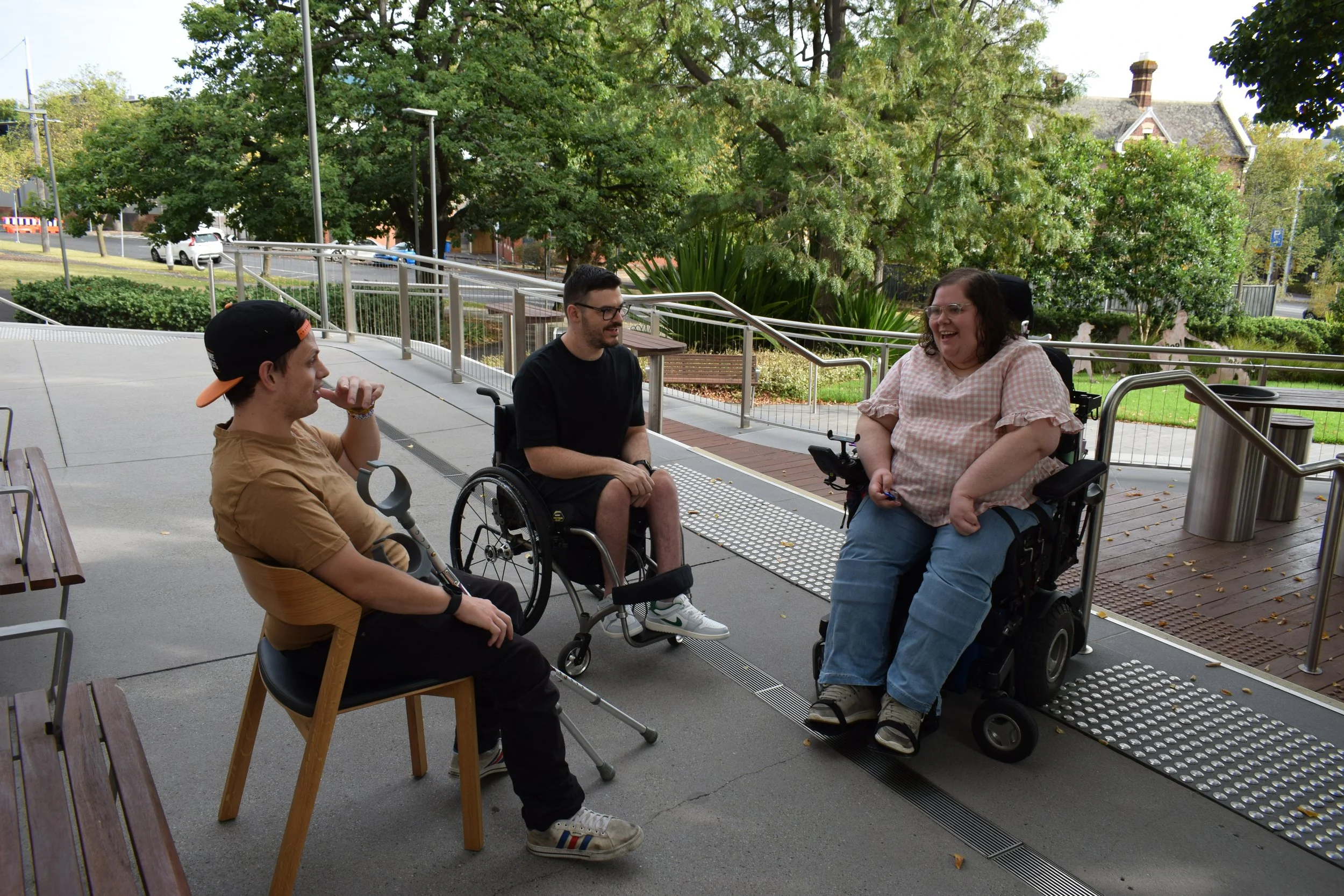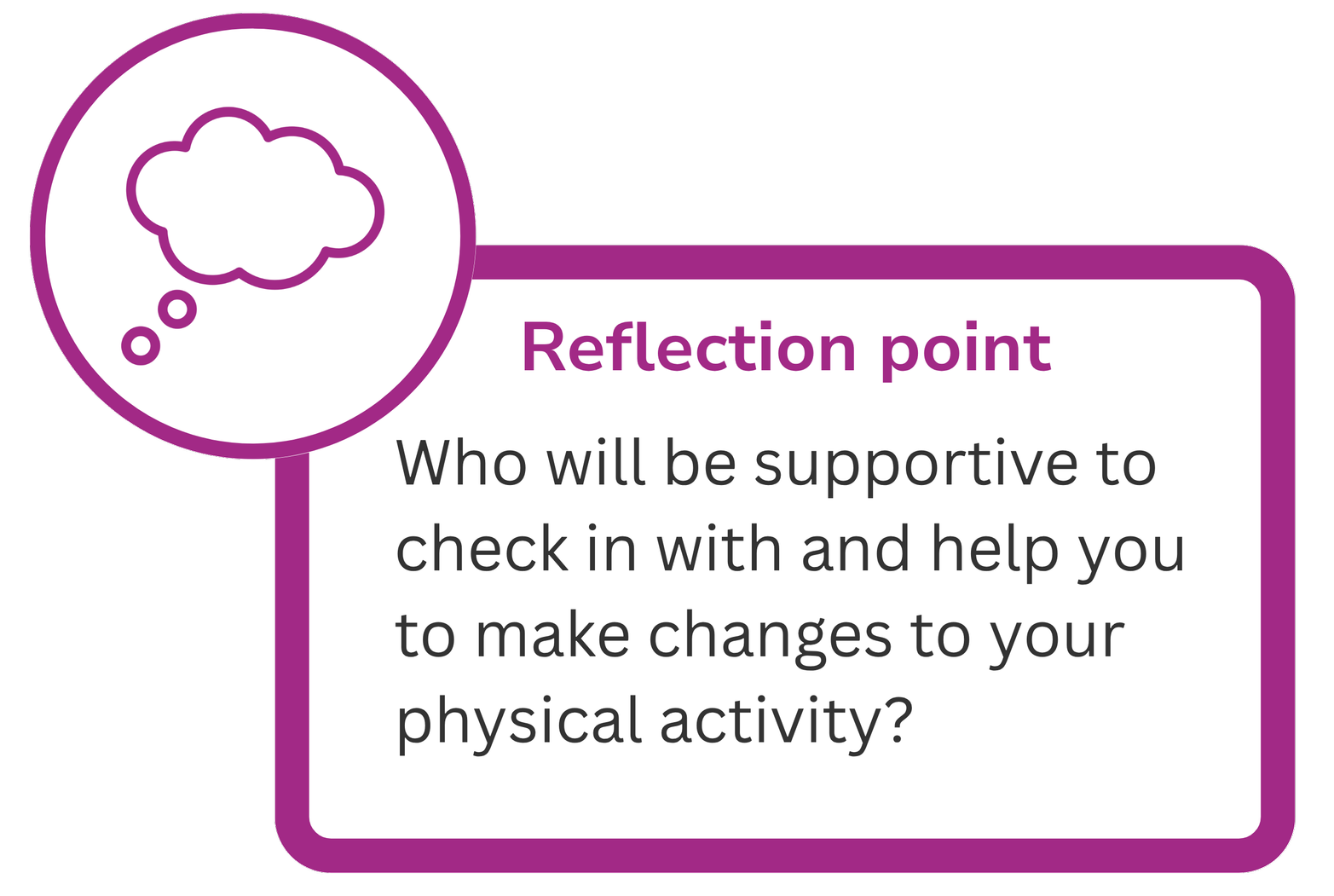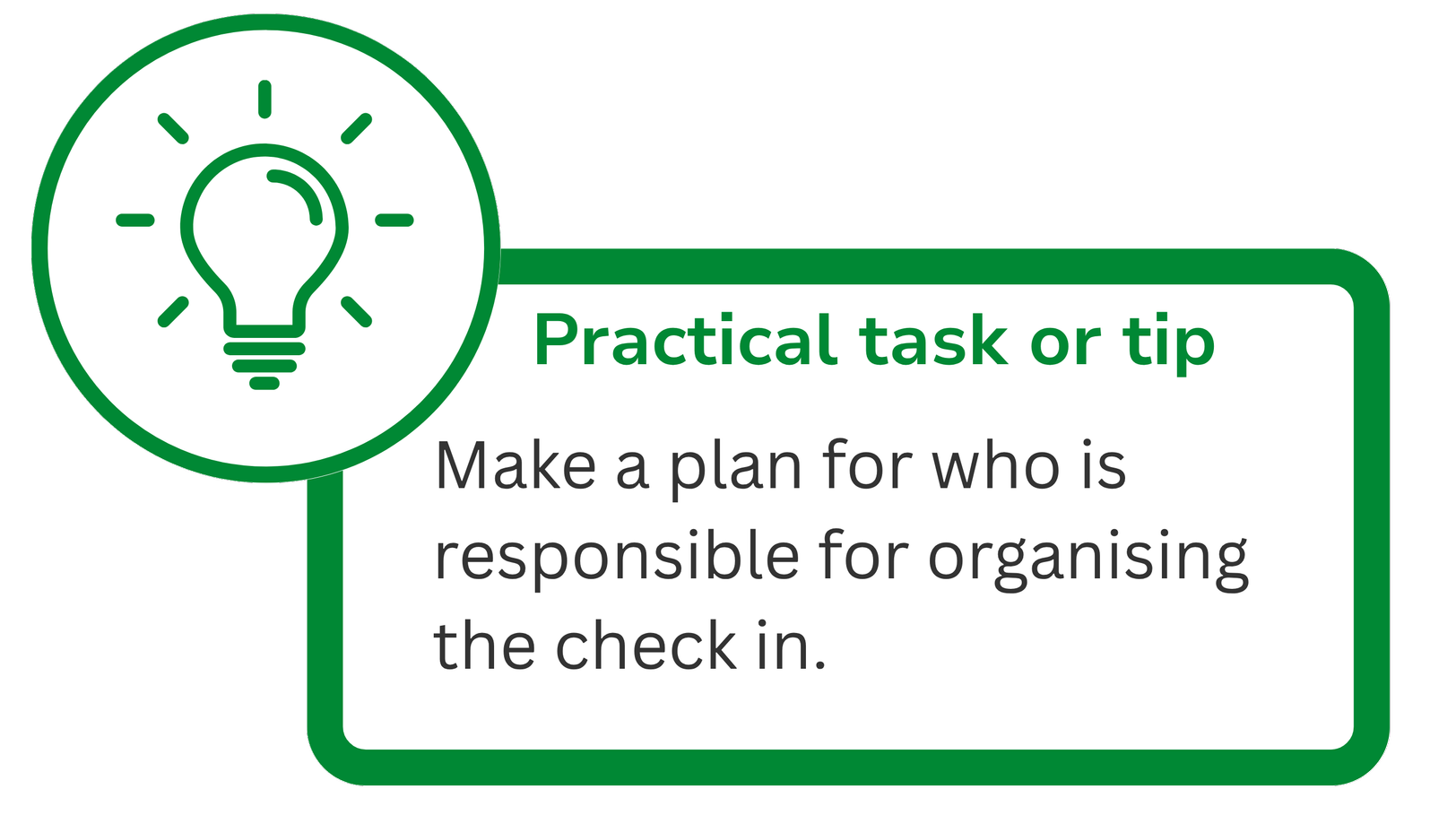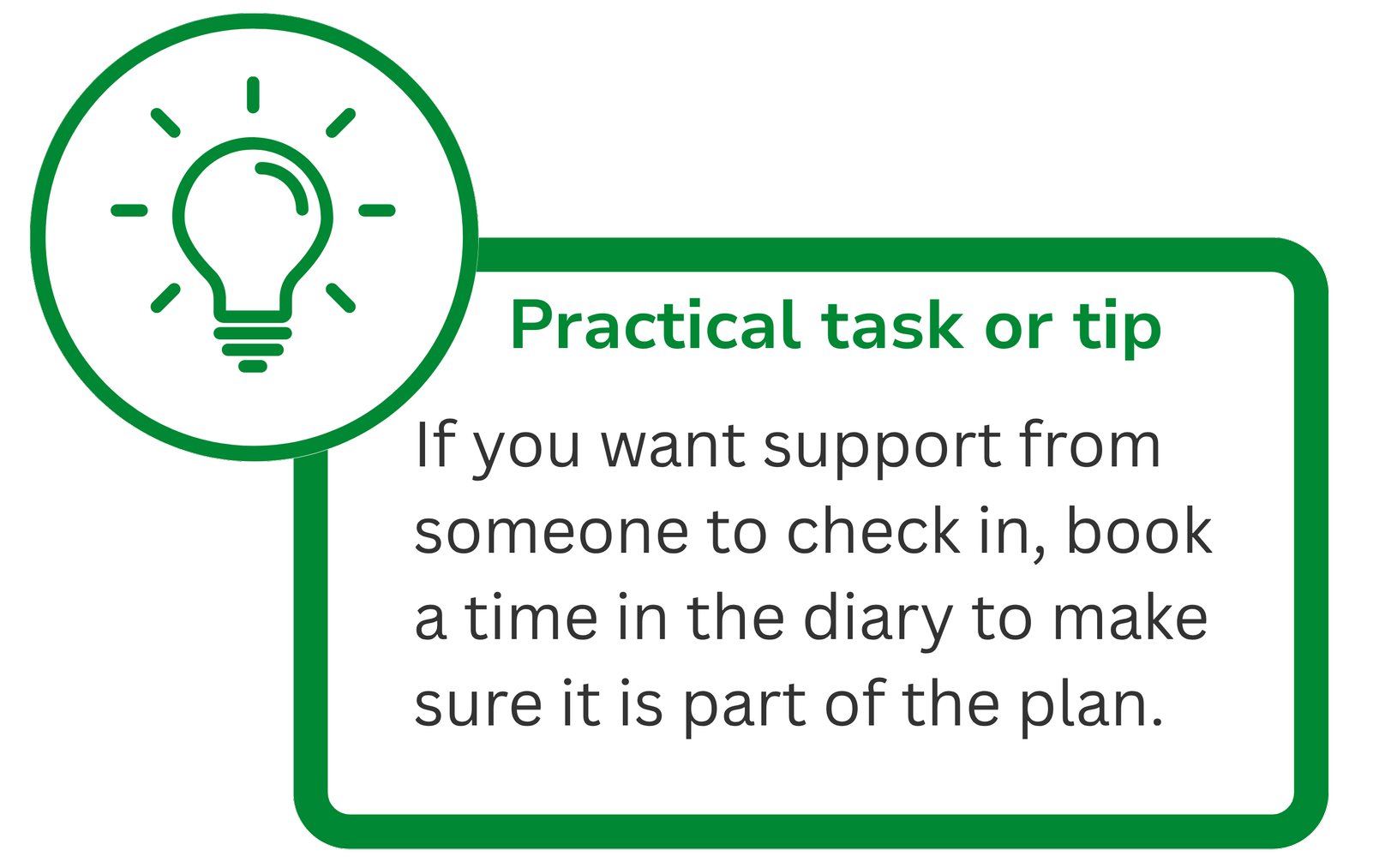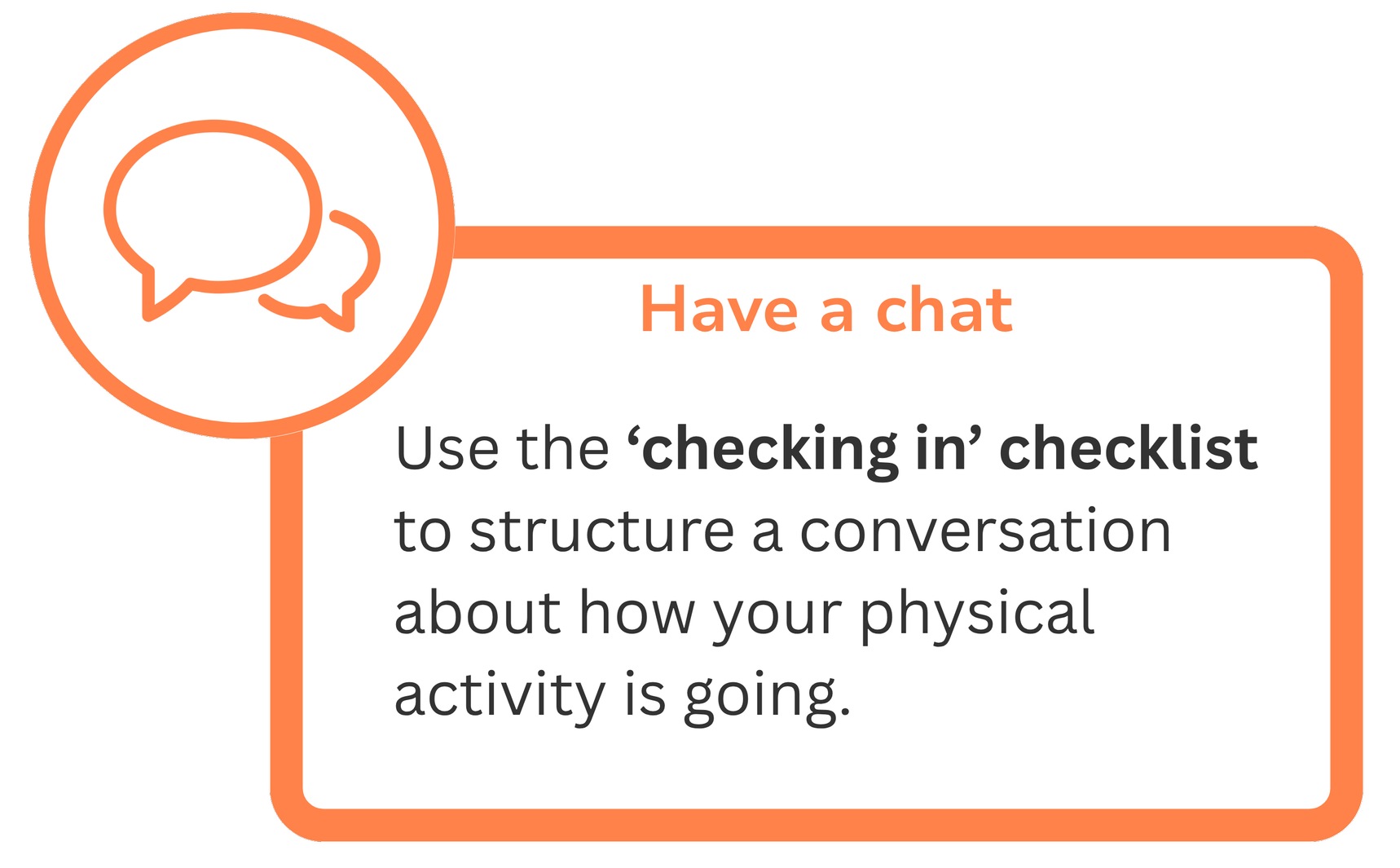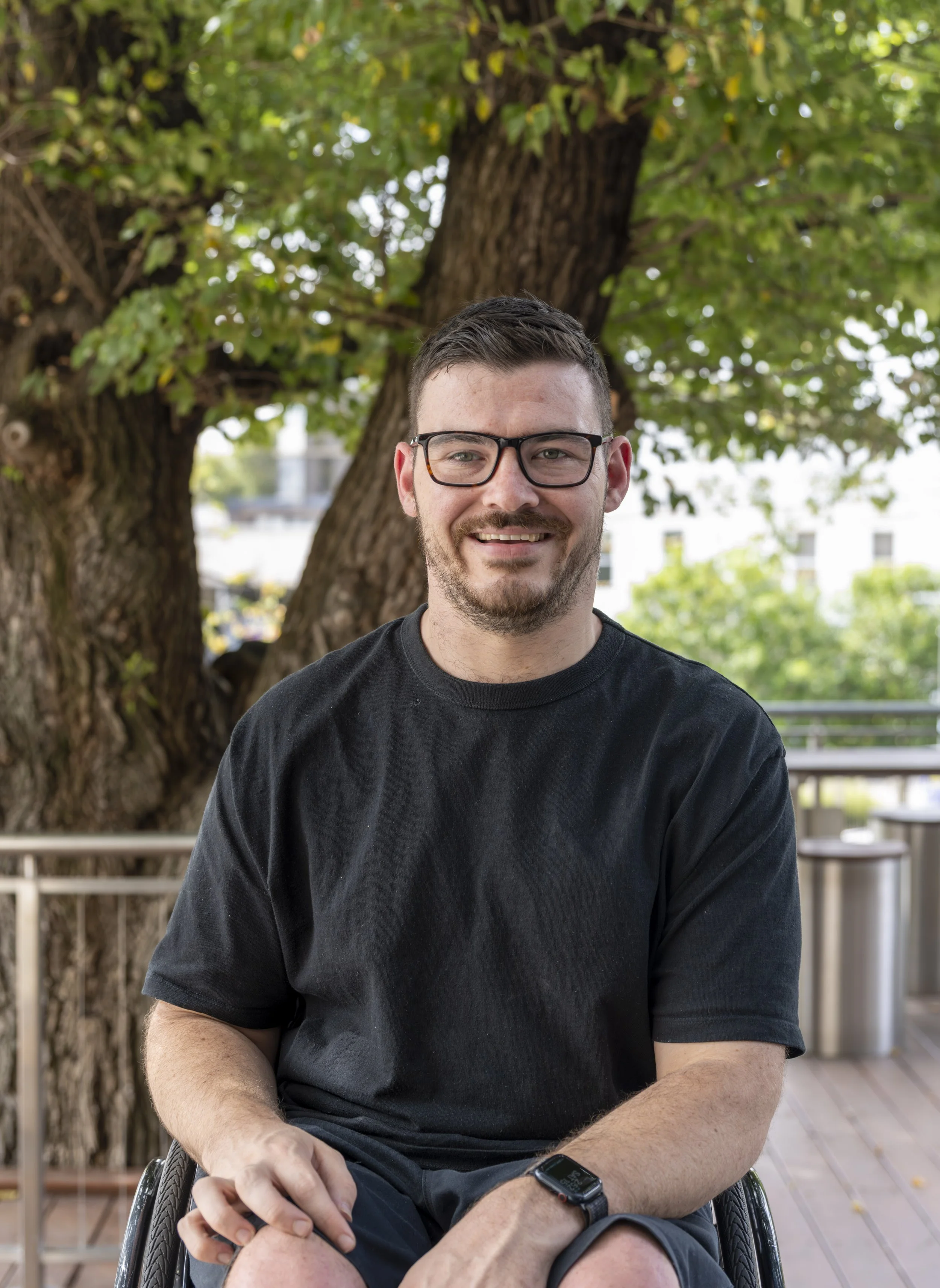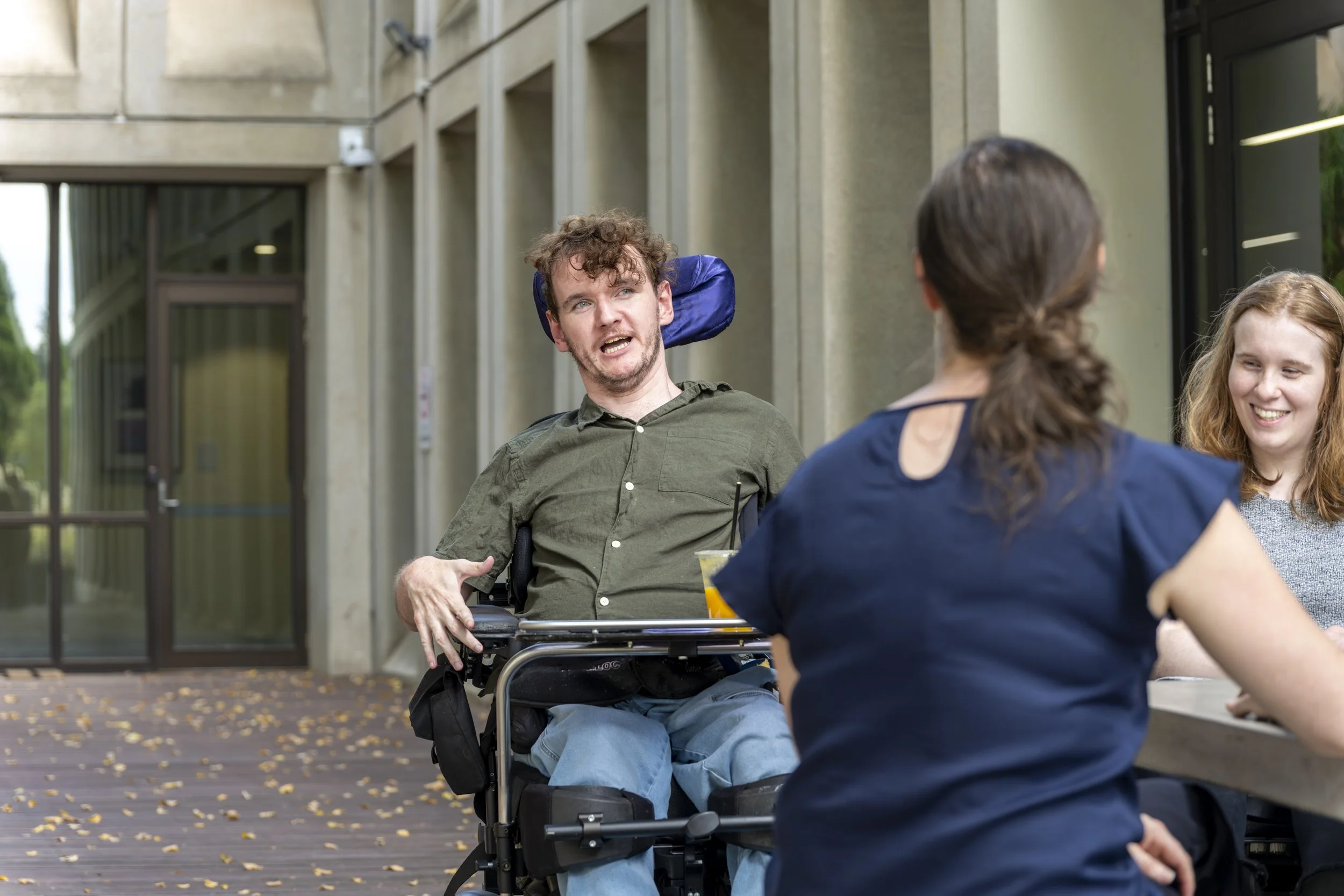
Checking in
Something that might have worked with your exercise program might not be working for you now….what do you do?
This section is about planning for regular ‘check ins’ where you can talk about your physical activity with a trusted person. We will also share practical tips on speaking up when you want to sort out an issue.
Why check in?
Life changes
You change
And your physical activity should be able to change with you.
There are many personal and life factors that can and do influence how, where or why you are active.
It is normal for things to change, it is normal to have ups and downs with physical activity.
Creating some way of checking in can help with adjusting to changes and staying active
When should I be checking in?
The timing for checking in will depend a bit on you and your preferences, as well as the activities that you’re doing.
A rough guide is probably every 3 to 4 months, though it might be more often at the beginning.
Once you’ve got into the hang of things, built your skills, and feel comfortable to change up different parts of your routine according to how you’re feeling, you probably don’t need to check in as often.
You’ll just be doing your thing!
“I find that it helps every three to four months just to check in and have my physio come to my session.
We switch it up because sometimes a routine can be boring if you're doing the same exercise for like a year.”
- Michaela
What should I be checking in about?
Checking in about whether the physical activity meets your current needs will help to work out if there are things that could to be changed, for example your:
‘Why’
You might want to increase the challenge, avoid boredom, or follow a new interest
Physical needs
How is your body responding to the exercise you’ve been doing?
Accessibility needs
Is there anything in the environment or with equipment that needs addressing?
Support needs
Do you have the people you need supporting you in the ways you need?
Do you want to ‘do’ or ‘delegate’ this?
Who should I be checking in with? And how?
It can be useful to think about who you want to check in with, and how you want to check in.
Who
Self check in
Checking in with others
Family
Support workers
Therapists
Friends and partners
How
Working out who to check in with might also depend on what kinds of topics you want to check in about and how you want that information
Observations from others - have they noticed changes e.g. physical, mental
Measurable feedback - toward goals, increases in reps/sets
Sharing stories about experiences
Accountability
Assistance for change
How can I change things up?
When you are feeling comfortable and confident that your body is going okay with the new activity, you could think changing things up!
This might mean increasing different parts of your physical activity routine, according to your needs.
Some examples of this might be increasing the:
Amount of time you spend exercising in a session
Intensity of your exercise (e.g. more time spent vigorously exercising)
Frequency that you exercise (e.g. increasing from 2 to 3 days per week)
Difficulty of the task e.g. for strength training, increasing the number of sets or reps or weight lifted

Speaking up
Speaking up when you have a concern
One of the great things about being an adult is having more say over what you do and how you do it.
But speaking up when you have a concern is a skill and something that takes time to develop and get comfortable to do.
You might need support to speak up - at the beginning or always.
You might need more or less support depending on the situation.
Help! I’ve tried it and it’s not for me - what do I do?
There can sometimes be pressure to keep going with things once they are set up.
It might have taken a lot of organising, it might fit your schedule best, or others might expect you to.
It is important to have a conversation if things are not working for you.
We all learn from experience. Even if this option isn’t for you, often finding what isn’t for you helps you figure out what is for you. You might also have learnt a lot about how to get started and what other activities you prefer.
We asked young adults to give their advice on speaking up
“Never stay silent if something is troubling you. It's important that your program gets reviewed and discussed. It’s important to give feedback - even if you feel like it’s being ignored. Don’t give in at all then.”
— James
“Starting the gym was intimidating, I didn't speak up at first because I didn't want to be seen as ‘difficult.’ But eventually, I spoke up about needing adjustments or when I needed time.
That moment taught me that my needs aren’t a burden, they’re valid.”
— Freya
“I wish I had someone saying ‘if you feel uncomfortable or you think it's not a good idea, it probably isn't’.
Because you know your own body.”
— Oliver
“If I could go back I would tell myself ‘it’s OK to speak up’…
— Michaela


